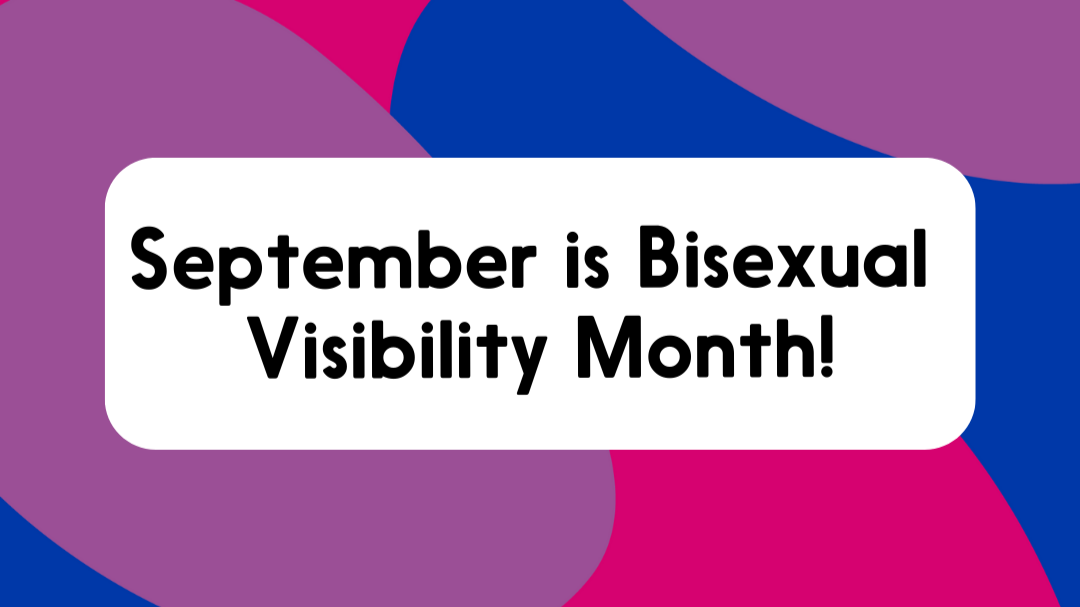Bisexuality at the Intersections: Why Visibility Matters More Than Ever
Image description: The bisexual flag is in the background with the text “September is Bi Visibility Month.” Courtesy of ILGA World.
From Courage to Visibility
In my last article, I wrote about what courage in leadership looks like from the margins. For me, part of that courage is being visible in all the identities I carry.
This month, that visibility means speaking about bisexuality, not only as part of who I am, but as a community that remains one of the least understood and most erased identities within the Rainbow spectrum.
I identify as androphilic, which simply means I experience attraction to men and masculine people, and part of the bisexual umbrella term, though bisexuality is broader. Bisexuality is an identity that lives both inside and beyond labels, one that has been historically overlooked in both queer and mainstream narratives.
The Minority Within the Minority
Bisexual people make up the largest proportion of the LGBTQIA+ community globally, yet we are often described as the “minority inside the minority.”
Why? Because bisexuality is frequently subjected to:
Bi-erasure: the denial that bisexuality exists at all, or the suggestion that people will “choose” a side eventually.
Stereotyping: bisexual people are dismissed as confused, untrustworthy, or hypersexual.
Invisibility in data: many surveys collapse bisexuality into “gay/lesbian” categories, hiding our realities.
The result is that bisexual people experience higher rates of mental distress, violence, and social exclusion than their lesbian or gay peers, despite being the largest group within Rainbow communities.
Campaigns for Change
We are not invisible, and across Aotearoa | New Zealand, Oceania, and the world, campaigns are fighting back.
Domestically: Organisations in Aotearoa like Qtopia, InsideOUT, and RainbowYOUTH have worked to increase visibility in schools and communities, though bisexual-specific programmes are still limited.
Regionally in Oceania: ILGA Oceania and local bi+ networks highlight bisexual experiences across the Pacific, where colonial legacies and local realities intersect in unique ways.
Globally: Campaigns like #BiVisibilityDay (celebrated every September) and groups such as BiNet USA and Stonewall UK have pushed for recognition in policy, funding, and health research.
“Bisexual visibility is not just about celebration, it’s about survival. Without visibility, we are erased from the data, from the funding, and too often, from our own communities.”
More Than One Lens
Bisexuality does not exist in isolation. For me, it intersects with being Māori, Pacific, disabled, takatāpui, rural, and androphilic. For others, it intersects with race, faith, disability, class, and gender.
This is where intersectionality becomes essential. When bisexual people at these intersections are erased, entire communities lose out on equity. Data without intersectionality hides us. Policy without intersectionality fails us. Campaigns without intersectionality exclude us.
Rebalancing Power and Privilege
So what can be done?
Name us in the data. Surveys, censuses, and research must disaggregate bisexuality instead of collapsing us into “other.”
Resource bisexual leadership. Fund bi+ community organisations and initiatives domestically, regionally, and globally, not just broad Rainbow initiatives.
Challenge bi-erasure. Call out stereotyping in media, workplaces, and policy spaces.
Embed intersectionality. Recognise that bisexual people are not a single identity, and design campaigns that reflect our diverse realities.
Shift power. Ensure bisexual people are not just consulted but hold decision-making roles in Rainbow and mainstream organisations.
“To rebalance power and privilege, we must start by recognising who has been erased. Bisexual people are not a footnote in the Rainbow story, we contribute as authors of it.”
My vision is for a world where bisexuality is not invisible, but celebrated. Where bisexual leaders, communities, and whānau | families are supported to thrive. Where intersectionality is the norm, not the exception.
Because visibility is courage. And courage at the intersections can change the world.
🔗 Follow me for more reflections on systems change, equity leadership, and human rights diplomacy.
🖤 Ko te pae tawhiti whāia kia tata. Ko te pae tata whakamaua kia tīna. | Seek out the distant horizons so they may become close. Hold fast to the close horizons so they may be secured.


